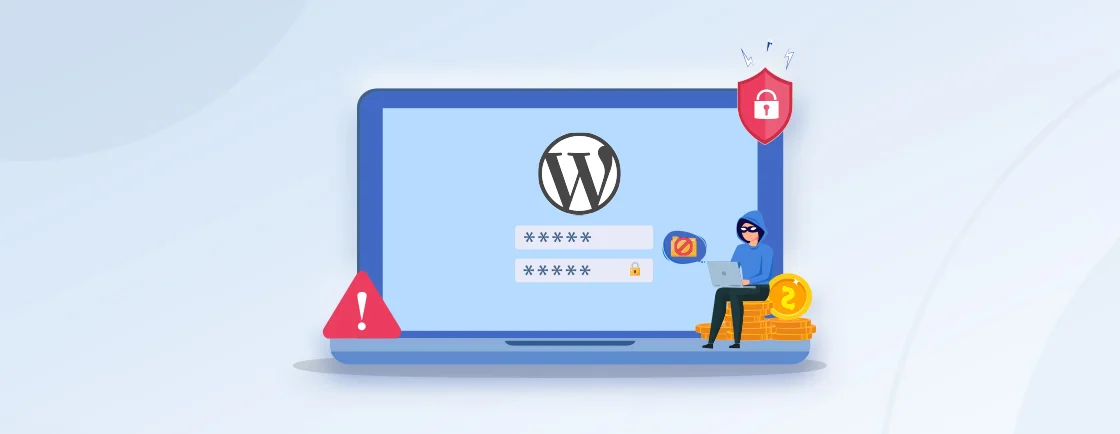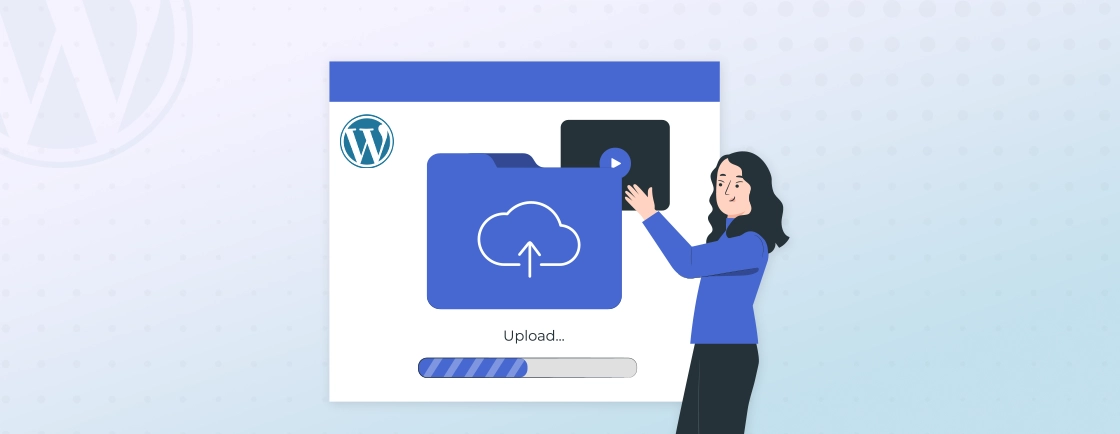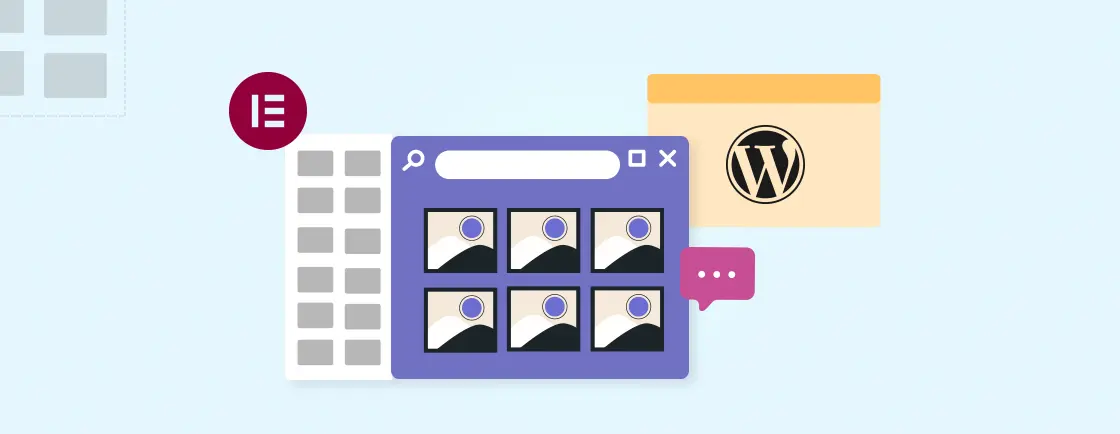Table of Contents
The visual editor in WordPress is a powerful tool that enables users to create, edit, and format content on their websites with ease. It provides a simple interface that allows you to see your changes in real time without needing to write a single line of code.
In this blog, we’ll help you learn how you can use a visual editor effectively to create posts and pages. We’ll understand how you can edit text, add hyperlinks, insert media, etc. Plus, we’ll dive into the best practices to follow to build unique and functional sites. With that, let’s start!
What is the WordPress Visual Editor?

The visual editor is a WYSIWYG editor, meaning you can see what your content will look like as you edit it. It’s the default editing mode for WordPress, but you can also switch to the Text Editor if you prefer.
You can add text, images, videos, and other elements and format them using tools like bold, italic, headings, and lists. The visual editor has two rows of editing icons that you can use to format your text or perform various actions.
Edit Icons in Row 1

- Style: This button allows you to apply various formatting styles to your text as defined by your theme. These styles might include things like headings, subheadings, and preformatted text.
- Bold: This button makes your text bold.
- Italic: This button italicizes your text.
- Unordered list (bullet points): This button creates a list of items with bullet points.
- Ordered list: This button creates a list of items with numbers.
- Blockquote: This button is used to display quoted text. The way it’s styled will depend on your theme.
- Align Left: This button aligns your text to the left.
- Align Center: This button aligns your text to the center.
- Align Right: This button aligns your text to the right.
- Insert / Edit Link: This button allows you to insert or edit a link in your text.
- Remove Link: This button removes a link from your text.
- Insert Read More tag: This button inserts a “Read More” tag, which can be used to create a summary of your post and a link to continue reading the full post.
- Toggle Toolbar (enables the second row of editing icons): This button toggles the visibility of the second row of editing icons.
- Toggle Distraction-free Writing Mode: This button toggles distraction-free writing mode, which hides most of the WordPress interface and lets you focus on your writing.
Edit Icons in Row 2

- Strikethrough: This button creates a strikethrough line through your text.
- Horizontal Rule: This button inserts a horizontal line across your content.
- Text Color: This button allows you to change the color of your text.
- Paste as Text: This button pastes text from your clipboard without any formatting.
- Clear Formatting: This button removes any formatting that has been applied to your text.
- Insert custom character: This button allows you to insert special characters unavailable on your keyboard.
- Outdent: This button decreases the indentation of your text.
- Indent: This button increases the indentation of your text.
- Undo: This button undoes the last action you performed.
- Redo: This button redoes the last action you undid.
- Help: This button opens the WordPress help documentation.
These icons and their functions streamline the content editing process, making it easier to create posts and pages on your WordPress site.
Why Use the Visual Editor in WordPress?
Using the visual editor in WordPress can be beneficial for several reasons, especially for users comfortable with its interface. Here’s why you might choose to use the visual editor:
- User-Friendly Interface: The visual editor is designed to be intuitive and easy to use, making it accessible to users of all skill levels. You can see how your content will look before publishing, and you don’t need to know any coding to create professional-looking content.
- WYSIWYG: The visual editor provides a WYSIWYG experience, meaning that what you see on the screen is what your visitors will see when they view your website. This makes it easier to visualize your content and make adjustments as needed.
- Rich Formatting Options: The visual editor offers a variety of formatting options, including bold, italic, headings, lists, and blockquotes. You can also insert images, videos, and audio files and customize their appearance and behavior.
- Custom Blocks: WordPress offers a wide range of blocks that you can use to create different custom post types of content. These blocks can be used to embed social media feeds, create galleries, add call-to-action buttons, and much more.
- Integration with Other Tools: The visual editor can be integrated with other tools, such as social media plugins, email marketing software, and analytics tools. This allows you to manage your website content and track its performance from a single dashboard.
- Compatibility: Some older themes and plugins may be designed with the Classic Editor in mind. Using the visual editor ensures compatibility with these tools.
These benefits are the reason why many choose to use visual editors to edit sites. Block Editor has also been a popular choice, but some old themes and plugins might not be compatible with it.
How to Use the WordPress Visual Editor to Edit Your Site?
Using the WordPress visual editor to edit your site allows you to manage content effortlessly with a user-friendly interface. Here’s a guide on how to use the visual editor to edit your WordPress site:
Accessing the Visual Editor
Before beginning to use the visual editor, the first thing to do is to access it. Here is how you can access it from your dashboard:
Step 1: Log in to your WordPress admin dashboard by navigating to yourdomain.com/wp-admin and adding your login credentials.
Step 2: If you want to edit posts, click on “Posts” in the left-hand menu and select “All Posts” or “Add New”. If you want to edit pages, click on “Pages” and choose “All Pages” or “Add New”.
Step 3: To open the editor, click on the title of an existing post or page to edit it or click “Add New” to create a new one. This will open the visual editor.
With this, we have opened the visual editor, where you can edit posts and pages of your WordPress site.
Using the Visual Editor
We have seen how you can access the visual editor; now, let’s check how you can use the visual editor to edit your WordPress site.
Editing Text

In this step, we’ll learn how to format text, change text color and background, and create headings using the visual editor’s toolbar.
- Formatting Text: Highlight the text you want to format. Use the toolbar to apply styles such as Bold (B), Italic (I), or Underline (U). These options are visible in the first row of the toolbar.
- Text Color and Background: Change the text color by clicking the “Text Color” icon (an “A” with a color palette) and selecting your preferred color. For background color, use the “Background Color” icon (an “A” with a colored background).
- Headings and Lists: Use the “Paragraph” dropdown to select different heading levels (Heading 1, Heading 2, etc.) to organize content hierarchically. Click on the Numbered List or Bulleted List icons to create lists.
After completing this step, you’ll be able to make your text bold, italic, underlined, change its color and background, and create headings and lists to structure your content effectively.
Inserting and Managing Media

Here, we’ll explore how to add images, embed videos, and audio files to your content. We’ll also learn how to align and edit media after inserting it.
- Adding Images: Click on the “Add Media” button above the content area. Upload or select an image from the Media Library and insert it into your post or page. You can adjust the image alignment and size before inserting it.
- Adding Videos and Audio: Use the same “Add Media” button to upload or embed videos and audio files. To embed media from external sources, you can paste the URL directly into the content area.
- Aligning and Editing Media: After inserting media, click on it to reveal alignment options (left, center, right) and resizing handles. You can also click the “Edit” button to adjust media settings.
Now, you’ll be able to enhance your content with visual elements, making it more engaging and informative. You’ll also have the ability to customize the appearance and placement of your media.
Working with Links

In this step, we’ll learn how to create links to external websites or other pages within your site, as well as how to remove existing links.
- Inserting Links: Highlight the text you want to link and click on the “Insert/Edit Link” icon (chain link). Enter the URL, set link options (e.g., open in a new tab), and click “Apply.”
- Removing Links: To remove a link, highlight the linked text and click the “Remove Link” icon (broken chain link).
With this, now you’ll be able to provide additional context and resources to your readers by linking to relevant information. You’ll also be able to remove links if they’re no longer relevant or accurate.
Previewing and Publishing

In this step, we’ll see how to preview our content before publishing and how to save it as a draft if needed. We’ll also learn how to publish our content live.
- Previewing Changes: Click the “Preview” button to see how your content will look on your site before publishing. This helps ensure everything appears as intended.
- Saving Drafts: Use the “Save Draft” button to save your changes without publishing them. This allows you to come back and make further edits later.
- Publishing Content: Once you’re satisfied with your edits, click “Publish” for new content or “Update” for existing content to make your changes live.
You’ll be able to review your content and make any necessary adjustments before making it public. Plus, you’ll also have the option to save your work as a draft for further editing, and you can create WordPress custom fields for advanced editing.
Additional Features
If you made any mistake or want to reformat your page content, you have the option to undo/redo and format content.
- Undo/Redo: Use the Undo (left arrow) and Redo (right arrow) buttons to revert or reapply recent changes.
- Remove Formatting: If your content has inconsistent formatting, click the “Remove Formatting” button to remove all formatting from the selected text.
Now you can revert unwanted changes and maintain consistent formatting. This step helps streamline the editing process and ensure overall content quality.
By following the above steps, you will be able to use WordPress visual editor to edit your site with ease. If you are facing any problems or want development services, consider partnering with a WordPress web development agency.
Best Practices to Use Visual Editor in WordPress
To ensure a smooth and efficient editing experience, consider these best practices when using the WordPress visual editor:
- Use a Consistent Style Guide: Apply the same font styles, sizes, and colors throughout your site to ensure uniformity. This helps maintain a professional and cohesive look across all content.
- Utilize Heading Styles Appropriately: Use heading styles (Heading 1, Heading 2, etc.) to create a clear hierarchy and improve readability. Avoid using multiple heading levels for aesthetic purposes; instead, use them to structure your content logically.
- Resize Images for Web Use: Ensure images are appropriately sized before uploading. Large images can slow down your site’s loading time. Use image tools to optimize images without losing quality.
- Use Alt Text: Always add descriptive alt text to images to improve WordPress SEO. This helps search engines understand the content of the images and assists users with visual impairments.
- Add Internal and External Links: Include relevant internal links to other pages or posts on your site to keep visitors engaged and improve SEO. Add external links to reputable sources to provide additional value and context.
- Open External Links in New Tabs: Configure external links to open in a new tab so visitors stay on your site while accessing additional resources.
- Preview Before Publishing: Always preview your content to check how it appears on different devices and screen sizes. This helps identify formatting issues and ensures that your content looks as expected.
- Save Drafts Regularly: Save drafts frequently to avoid losing your work. This is especially important when working on lengthy or complex posts.
By following these practices, you will be able to create unique posts and pages for your WordPress site. However, if you want an optimized and customized site, you should hire dedicated WordPress developers.
Conclusion
Visual editor in WordPress offers a user-friendly tool that allows you to create, edit, and format content without any coding skills. By utilizing its features, you can easily add text, images, and multimedia elements to create visually appealing content.
Using a visual editor is simple once you understand all the edit icons and the features you can leverage. After you know its functionality well, you will be able to build unique websites with ease. And if you face any diffculties or need experts to complete this process, you should get in touch with us today!
FAQs About Using Visual Editor in WordPress
How do I switch between the visual editor and Text Editor?
To switch between the visual editor and the Text Editor:
– Open a post or page in the WordPress editor.
– Click on the “Text” tab to switch to the Text Editor (HTML view).
– Click on the “Visual” tab to return to the visual editor.
This allows you to toggle between seeing your content as it appears visually and editing the underlying HTML code
How do I add images, videos, or audio files to my content?
Click the “Add Media” button in the visual editor, then upload or select the desired file from your computer or media library. You can also insert videos by pasting their URLs from platforms like YouTube or Vimeo.
What are blocks in the WordPress visual editor?
Blocks are individual units of content that you can add and arrange to create your page or post layout. They can contain text, images, galleries, videos, and more.
Create with WordPress CMS
Build flexible and scalable websites using WordPress's powerful content management system.





